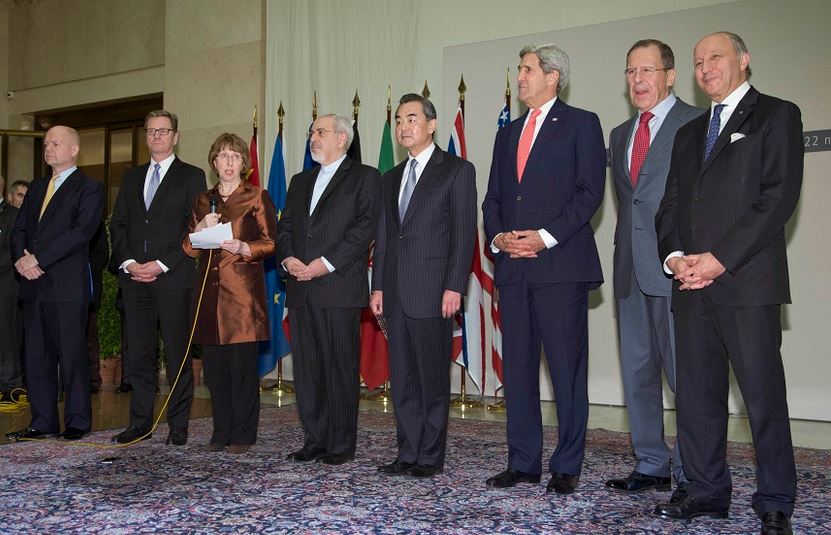A so called historic deal was struck between the United States and five other world powers and Iran in hopes of preventing Iran from developing a nuclear bomb by curbing its nuclear program.
The deal was announced by the EU foreign policy chief Catherine Ashton, accompanied by the foreign ministers of Iran, the US, UK, Russia, China, France and Germany.

Though the agreement was made possible by the intense negotiations between the six world powers and the recently elected Iranian President Hassan Rouhani, but the success of the deal is being mainly credited to a secret diplomacy between William Burns, a senior Obama administration official, Deputy Secretary of State and Iranian officials and US Secretary of State, John Kerry is seens as Negotiator in Chief.
Thought both the sides hailed the deal as a win-win situation but agreed that a lot of work needs to be done to make the deal a success. The agreement runs for six months while negotiations continue on a comprehensive final deal. The most notable points which the US and other world powers hailed are
- Iran will stop enriching uranium beyond 5%, and freeze or roll back its uranium enrichment programme.
- Greater access would be given to inspectors from the UN watchdog, the IAEA including daily access at the Natanz and Fordo nuclear sites
- Further development of the Arak plant would be halted. Arak plant is believed could produce plutonium.
President Barack Obama hailed the “substantial limitations” to Iran’s nuclear programme which would “cut off Iran’s most likely paths to a bomb”.
The Iranians were also able to claim that it left intact their “red line” guaranteeing their right to enrich uranium for peaceful uses. If Iran bides by the deal there will be no new sanctions imposed in the next six months. Also $7bn in international sanctions relief would be given to Iran on various sectors, including on gold and precious metals and aviation spare parts.
As far as it’s impact on East Asian and south east Asian countries are concerned, The US-Iran deal, which is currently of an interim nature with much more groundwork to be done before it is set in stone, has other profound consequences for India and the region. For one, its extricates Washington from the Sunni stranglehold that had cast the US as an unremitting ally of Sunni-dominated countries such as Saudi Arabia, Pakistan, and Egypt against mostly Shia-dominated Iran, Iraq, and Syria. India, which has about a 70:30 Sunni-Shia mix, has an exemplary record of intracommunal harmony, and there were lurking fears that this might be disrupted if the Sunni-Shia conflict in the Muslim world expanded eastward.
The most important question is, would this deal would follow the same footsteps of the Oslo peace process – with one side using the interim period to strengthen the very processes the agreement was meant to stop until a fait accompli is produced? Or will the main parties honor the spirit of the accord and move towards a full implementation that can resolve all outstanding issues and produce a normal relationship with each other and the international community.
No matter how the deal pans out in the near future, the deal in its current version aims at addressing the central problem of mistrust between the West and Iran and tries to tackle the concerns that the Iranians have only been “buying time” with the West while pursuing negotiations and at the same time increasing the spinning centrifuges which are used to enrich uranium.
Only the time will tell whether the deal is a Win-win situation, though it has the prospects of one, provided both the parties stick to the terms of the deal and develop a full comprehensive plan acceptable to all the stakeholders.
